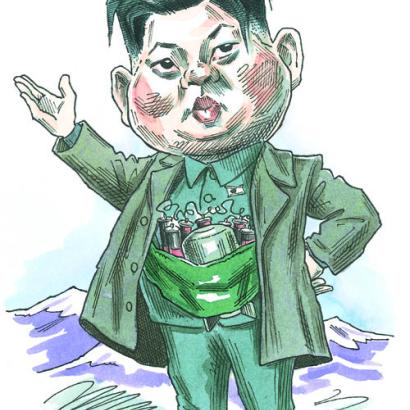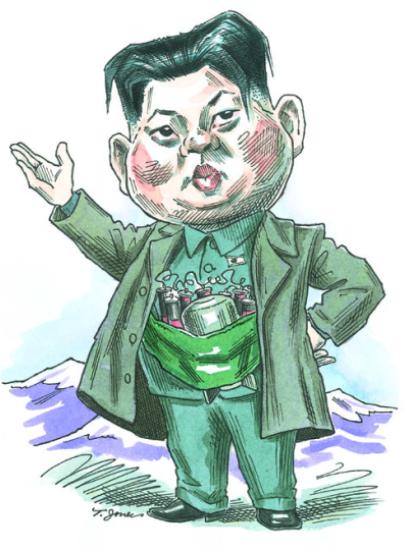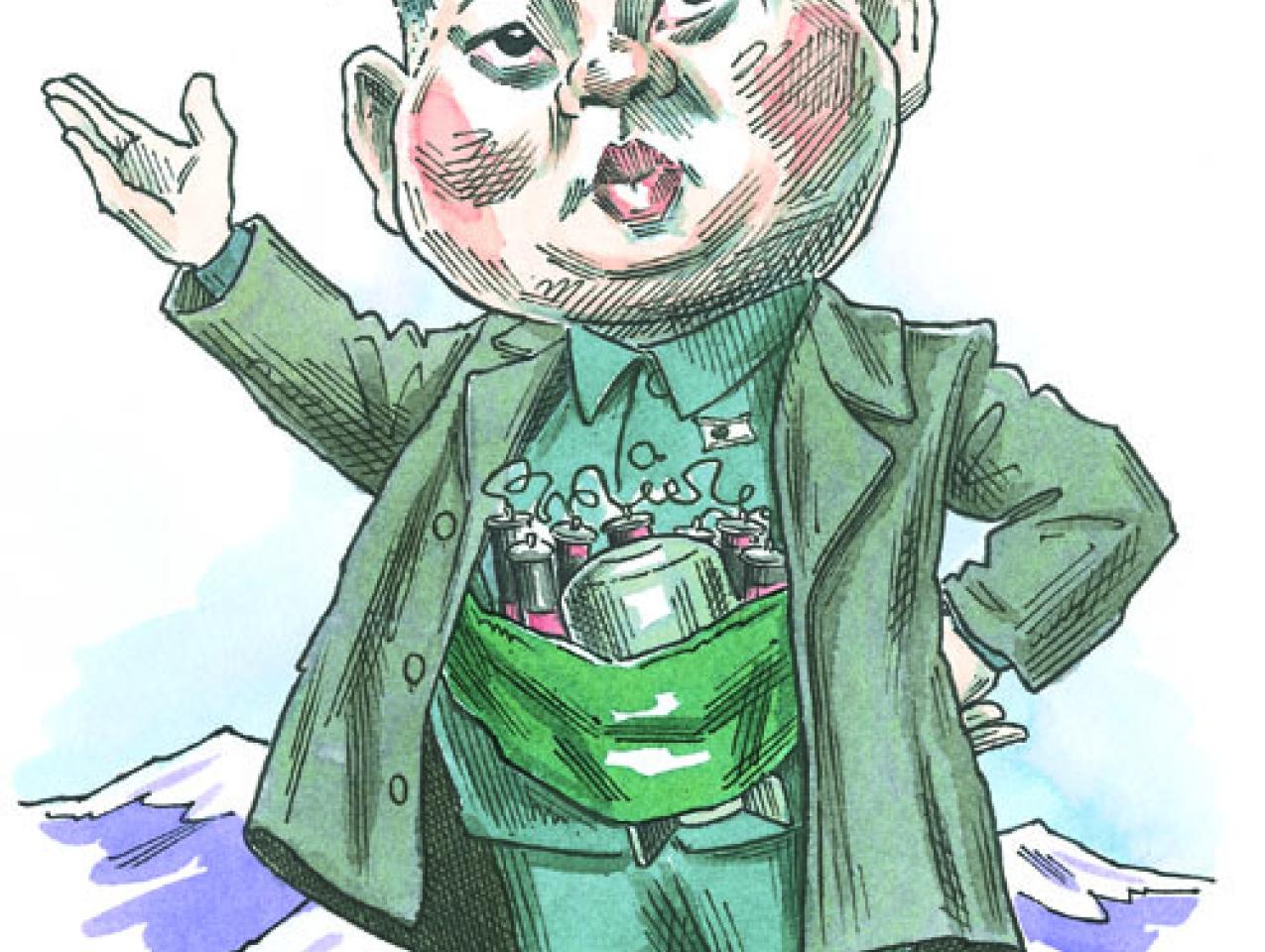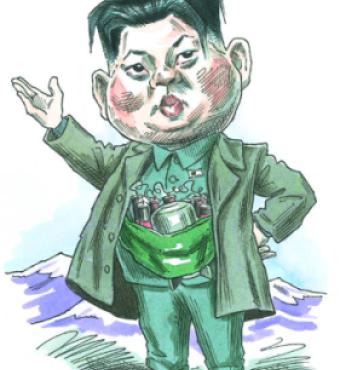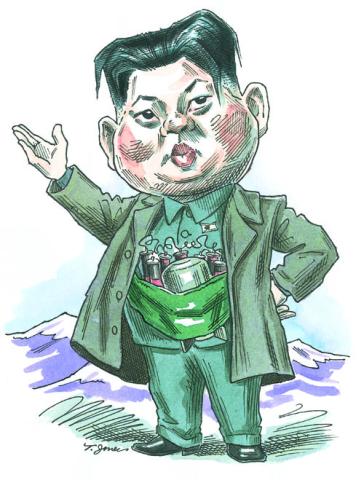- International Affairs
- US Foreign Policy
- US
- Contemporary
- Military
- World
- Security & Defense
- US Defense
- Terrorism
- History
The Korean Peninsula has re-emerged as one of the key areas of concern in U.S. foreign policy. This concern is driven by the often-unpredictable choices of the secretive and mercurial North Korean leadership, North Korea’s success in acquiring nuclear weapons technology, and the political and military cover extended by China and, to a lesser extent, Russia.
The handover of the formal “supreme leader” powers at the death of Kim Jong Il this past December to a younger member of the Kim clan was not altogether unexpected. But the extent of Kim Jong Eun’s real power remains a mystery. More certain, given the record of the past two years, is that North Korea’s newly acquired nuclear arsenal has untied its hands in using military actions against South Korea as part of its diet of regime maintenance and power consolidation.
The apparent continuity of the North’s policies toward its friends and enemies, much emphasized by the North Korean official sources in the wake of Kim Jong Eun’s ascension, belies the instability of the status quo. Signs of that instability appeared in the sinking of a South Korean naval corvette—at a loss of forty-six lives—and the shelling of the South Korean border island Yeonpyeong. Both actions, according to media reports, were under the operational command of the future supreme leader, Kim Jong Eun. Recent years have also witnessed a pattern of increasing threats of future escalations in response to defensive measures from the South and its allies.
The more aggressive posture from North Korea, exacerbated by the failure of the six-party talks (North Korea, South Korea, China, Russia, Japan, and the United States) to sustain any progress, underscores the security dilemma for the South and its primary allies, the United States and Japan. Allowing the North to engage in military provocations unpunished encourages it to hold South Korea’s peace as a hostage—ransomed for economic or other assistance for Kim Jong Il’s heirs. Responding with military measures, however, risks triggering a nuclear action from the North’s leaders, who may see them as a threat to their very existence, leaving the North with little to lose.
The risk of nuclear action is a double-edged sword for the desperate North. It ties the hands of South Korea and its allies but also, if deemed too great, pressures the North’s ally, China, to use its influence to remove the source of the threat. But China is unlikely to want to do so outright, as this would weaken its influence.
Must South Korea and its allies accept the status quo, or are there steps they can take to neutralize or at least mitigate the threats from the North?
LIKE A MANAGEABLE ILLNESS
There is little hope of resolving the security dilemma through negotiations, at least for the foreseeable future. The rise of China’s economic power has made it less susceptible to pressures to rein in North Korea and more willing to allow it a longer leash for adventurous actions against the South. Meanwhile, hopes that the North will accede to denuclearization are rapidly vanishing, as the North Koreans see their nuclear weapons program as an indispensible guarantor of their security. As the North’s officials were quick to point out at the start of the NATO military action against the late Muammar Gadhafi’s government in Libya, such an action would have been difficult to imagine had Gadhafi not chosen to shut down the country’s nuclear weapons program (built from North Korean blueprints).
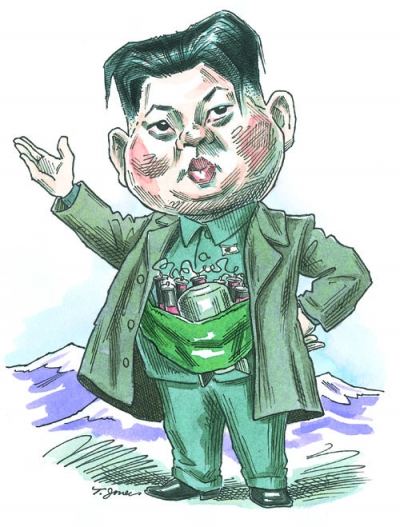
It seems clear that if negotiations with North Korea, whether in a six-party or in some other regional framework, are aimed at dismantling its nuclear program, they are likely to fail. While giving up the nuclear program might serve the interests of North Korea, it does not, at least at this time, serve the interests of its leaders and their backers.
It is also clear that the United States, with or without South Korea, is highly unlikely to engage in any kind of decisive action to change the regime in the North or denuclearize it forcibly. First, with a guarantee of Chinese and likely Russian opposition in the U.N. Security Council, there simply is no appetite in the post-Iraq world for unilateral military action on that scale. Second, Washington is not prepared to cope with the range of possible reactions from China—a country whose economic policy toward the United States has a strong influence on American monetary and fiscal stability and whose economic and military capabilities could easily sustain a protracted proxy conflict with the United States.
Third, and no less important, is that with any such pre-emptive action, one cannot rule out the possibility that some of the North’s attack capability may survive, at least initially, and be used by its desperate leaders in a nuclear response. It is this worry that in one form or another makes the security dilemma for the South so grave. Although grounded more in guesswork than fact, the possibility it evokes makes pre-emptive military action against the North all but impossible.
The North Korean threat is not going away soon. It is an illness that, for now, cannot be effectively treated, but South Korea and its allies must manage to the best of their capabilities. But how?
AGAINST DEFENSIVE NUCLEARIZATION
According to a recent estimate, more than two-thirds of South Koreans prefer that their military acquire nuclear weapons. Prominent establishment politicians have pushed for returning to the development of the nuclear capability that the country set aside in 2004. The proponents of the South’s nuclearization maintain that an effective second-strike capability is needed to bolster deterrence against both North Korea’s growing nuclear arsenal and, indirectly, its conventional military provocations, which are backed by the threat of nuclear escalation.
Given its technology and purposes, the North’s nuclear devices are probably both relatively primitive and high-yield—not the highly sophisticated, low-yield precision tactical weapons developed by the United States and Soviet Union at the peak of the Cold War. To wreak the kind of devastation that would be needed for successful second-strike nuclear deterrence against such weapons, the South’s weapons would need to be similarly large. But any threats to use such devastating weapons would face a severe credibility challenge in a liberal society with transparent government decision-making and government accountability. South Korean leaders would have to answer to their citizens about whether national interest justified such a strategy.
This debate should be familiar to those who remember the nuclear strategy debates of the Cold War. But geography makes an important distinction. The Soviet Union’s territory was vast and its population scattered; the Korean Peninsula is a relatively small and connected area with divided families on each side of the border hoping for future unification. A nuclear attack in such an environment would be devastating, but so would a retaliatory strike, whose strategic value after the initial attack—given its failure as a prior deterrent—would be hard to justify.
Even if a retaliatory second-strike use of nuclear weapons did not lack credibility, its deterrent effect on a society like North Korea is weakened by Pyongyang’s domestic politics. This is a closed society with no transparency or accountability. The key government decision makers are not selected for how closely their values and interests reflect those of the population. Worse, in a dynastic totalitarian regime they are selected for neither the clarity of their judgment nor their psychological health. What might be effective in deterring offensive actions from countries like South Korea or even the Soviet Union should not be expected to deter a North Korea.
Ultimately a nuclear second-strike capability by the South is unlikely to be credible and persuasive to the North’s leaders, and thus is unlikely to work as a deterrent.
A WELL-CRAFTED CONVENTIONAL RESPONSE
Rather than pushing to go nuclear, South Korea should adopt a well-calibrated strategy of conventional military response. The strategy that is both feasible and suited to the present security environment is one of conventional automatic proportional transparent retaliation (CAPT-R). These are its five key principles:
- Conventional military actions from the North must receive an automatic (nondiscretionary) response from the South, without delay and without further attempts at negotiation with the North or its proxies.
- This response must be entirely proportional—that is, to each possible target for the North, South Korea must associate a comparable target in the North, with the exception of substituting military targets for the civilian targets hit by the North.
- South Korea must publicly announce and widely publicize the proportionality of its schedule of targets, to make transparent the meaning and limited nature of its retaliatory response.
- South Korea must announce and continually reinforce its adherence to these principles, possibly with international monitoring to reinforce its credibility to the North.
- The United States must endorse those principles and commit to the course of actions they would dictate.
In mandating predictable, automatic nondiscretionary response, this strategy shares some features of the automatic nuclear-response devices. However, because it calls for a limited conventional response, it avoids their credibility problems. While a country like South Korea faces incentives to get around a doomsday device, it has no such incentives when committing itself to a limited conventional response. Further, if such a response were automatic, South Korea would forgo the threat escalation that a delay in the response would generate. In other words, a provocation from the North would have a price attached to it that would be exacted immediately. The North’s leaders would be aware of, and would anticipate, that price. This would create the credible deterrence the South now seeks.
A key asset of CAPT-R is that, while denying the aggressors the benefits of strengthening their own hand through unpunished displays of machismo, it avoids two undesirable scenarios: one in which the North’s leaders come to believe all is lost and in desperation “go nuclear,” and another in which the more aggressive members of the North’s leadership benefit by touting the scare of large-scale retaliation from the South. The transparent, parity-based nature of military response would reveal to the North Korean leaders its well-defined limits. While being pushed back, they would know where the push stops. Here the United States’ commitment to the proposed strategy is essential: the strategy will not work if South Korea is bound by it but the United States is not.
There are two caveats: first, the automatic response is most plausible when the attack that triggers it is a single blow from a distance, rather than a substantial military incursion or invasion of territory. This points to the limits of relying on CAPT-R as an overarching military strategy. However, the attacks against which this strategy is effective are exactly the kinds of provocations that the North is engaged in and that are unmet by the present strategy, which builds on the military alliance with the United States and focuses on responding to the possibility of full-force attacks from the North. Second, the effectiveness of the advocated strategy must rely on the availability to the South of advanced tactical delivery weapons—rockets that could, with high precision, reach parity targets possibly deep within the North. The United States must be willing to support South Korea’s continual acquisition of such weapons and make clear to the North why, and under what conditions, they are deployed.
International monitoring would be highly desirable, and South Korea should embrace it as a central tenet of its defense policy. Creating a committee of expert military monitors that includes, among others, Chinese and Russian representatives as the North’s proxies would help communicate to the North both the limited nature and the credibility of the South’s retaliatory responses. Again, avoiding a nuclear response is in the interest of China and Russia. South Korea and the United States should emphasize this fact to convince the leaders of those countries that cooperation is to their benefit.
REDEFINING EXPECTATIONS
South Korea and the United States must approach the current security predicament on the peninsula through a sober reading of the incentives and capabilities of the relevant parties. Those factors suggest three related conclusions.
First, the nuclearization of South Korea’s military is not an attractive option.
Second, South Korea need not accept the binary choice of living under the unchecked and escalating military provocations from the North or risking igniting a nuclear response by resisting them. The conventional response strategy outlined above creates the conditions for both deterring the provocations and reducing the threat of disastrous, worst-case outcomes. It is a strategy for a military response that is, indeed, a strategy for maintaining peace.
Finally, expectations for the six-party talks need to be redefined. Negotiations with North Korea have value, but their success should not be predicated on the North’s surrendering its nuclear arsenal and abandoning its nuclear program. Desirable it may be, but that outcome is outside the realm of the feasible, given the interests and capacities of the North’s patrons. The talks should instead pursue feasible goals: making transparent South Korea’s military strategy and, having established a new set of military expectations, making the case that provocations by the North would be unprofitable. Such a mutual understanding can then lay the ground for progress on economic questions of mutual interest, including the exchange of economic aid for the operational security of the North’s nuclear arsenal.








